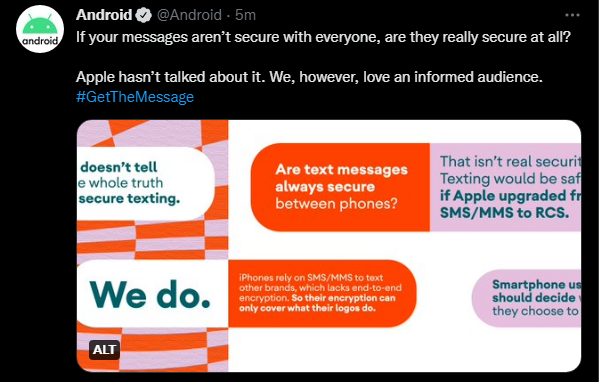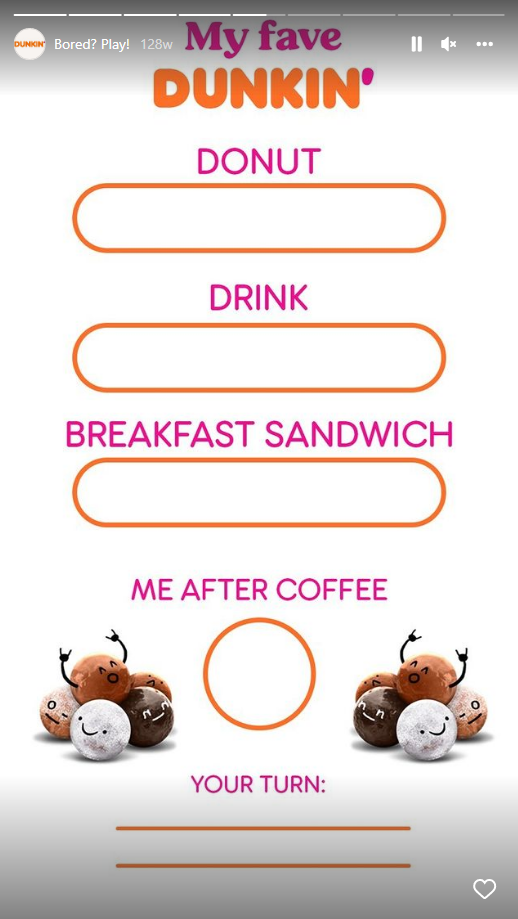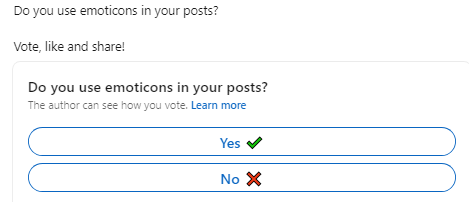If your customers are on social media – and let’s face it, they are – your brand’s ads also need to be on social media. That’s a given. So the question that follows is: how? How should your brand’s social media advertising look to effectively reach your target audience? How can you optimise your social media ads to maximise your conversion rates?
The answers to these questions depend on a few factors, like the type of product you’re offering, the type of customer you’re seeking, and even which kind of campaign you’re running. We’ve broken down four major types of social media advertising and explained what each one does best. Take a look and see how each can fit into your larger social media advertising strategy.
1. Video ads
You might have heard that platforms like Instagram and Facebook are moving away from static images and toward video to compete with TikTok. Whether you’re happy about that or not, it’s true.
Video ads tend to have higher engagement rates than static image ads. On Facebook, Databox found that 59% of small businesses polled said videos drive more clicks than images. On Instagram, Promo found that organic video ads get 38% more engagement than static images.
There are a few reasons why this is the case, and Hubspot published their findings on these reasons in their report, What Video Marketers Need to Know in 2022. Viewers often feel like they understand a product better after viewing a video ad versus a static image. Videos themselves also hold viewers’ attention better – they stop people from scrolling past, even if it’s just a brief pause. We’re also watching about double the amount of online videos that we watched in 2018, which also makes them ideal for lead generation – Hubspot found that 86 percent of marketers polled said video is perfect for this.
Even without stats, it makes logical sense: a video can show a whole lot more than a static image. You can tell a brief story in a video, or a whole saga in a series of video ads. Sakeru Gummy did this with their Long, Long Man campaign. To advertise their new, 50cm long gummy sweets (versus the shorter original version), they created a series of ads that looks like a television drama. Chi-chan, one of the main characters, is initially intrigued by the mysterious Long, Long Man who enjoys long Sakeru sweets. Her boyfriend becomes jealous, then believes she is cheating before she makes a shocking confession. This is just the first of the unexpected twists in the story…we won’t spoil the rest, but we’ll link the whole thing so you can watch it yourself:
Audiences became familiar with Sakeru Gummy’s characters, then continued to tune in to ads that told their story further. Video by OrbitalSquid, via Youtube
You can do lots of things with video. Some of these include:
- Creating endearing characters like Sakeru Gummy did and build an emotional connection through storytelling
- Getting stuck in audience’s heads with a catchy earworm of a song
- Animations or stop-motion videos showing how your product is made or its life cycle
- Recording interviews with buyers. This can be traditional-style, sit-down interviews or short, “man on the street” clips, depending on your product, audience and ad’s goals
- Leverage influencer advertising to build engagement and promote your brand
There are lots of ways to do video ads, but not necessarily every strategy is going to work for your brand. Think about where your audience is most likely to see your ads – on their phones? Laptops? If you don’t have an answer for this, you aren’t ready to start producing video ads. First, conduct thorough audience research to determine not only who they are, but where and how they tend to consume video. If your audience tends to spend the bulk of their time on TikTok, you’re facing different formatting and timeframe constraints than an audience that spends more time on YouTube. For ads that will likely be viewed on smaller devices, you can’t have as many visual details in each shot because viewers will likely miss them.
Which platforms support video ads?
Every social media platform supports video ads. However, within each platform, only certain types of video ads are supported.
Instagram and Facebook both support in-feed video ads, stories video ads, carousel and collection video ads and interactive video ads. LinkedIn and Twitter only support in-feed video ads.
When you’re creating video ads, keep each platform’s length limits in mind. Even within a platform, different placements can have different length limits for videos. For example, Instagram video ads can be up to 120 seconds, while video ads in Facebook messenger can be up to 240 seconds. You might end up creating multiple versions of the same core ad to place on different platforms, like a full version and an “abridged” version that just hits the key points for platforms with shorter limits.
2. Static image ads
With social media advertising, you don’t always have to reinvent the wheel. There’s always the classic static image ad. But this kind of ad can be kind of boring, right? After all, it’s just an image. It doesn’t move, or make noise, or tell you an engaging story like a video can.
Not necessarily.
There are a tonne of ways you can spice up static image ads. You can post a collection contrasting photos in an image carousel to show all the different contexts in which buyers can use your products. For example, shots of your insulated water bottle at the gym, on a hike, sitting on a student’s desk and hydrating them through a long exam, and accompanying them on an adventure, like skydiving. A similar take on this would be a carousel – which is a series of images grouped in one post that the viewer can swipe through – showing all the different styles or types of the product you offer, like each hoodie design or all the gardening tools you have, each showcasing how to use the tool.
You could also create a narrative through the carousel, driving followers to keep swiping to get to the satisfying conclusion. Think about the story Sakeru Gummy told with their Long, Long Man series above, where each video told the next chapter. You can use a collection of still images to tell a story, comic book-style.

A basic look at how image carousels work. Social media design by G-3 via 99designs by Vista.
And sometimes, you don’t need to do any of that. Sometimes, all your ad needs is a great image and some catchy copy…or even just one of those things.

Ads don’t always have to be overtly salesy – sometimes, they’re PSAs. Image via Twitter
Static images come in a few different forms, depending on the platform you’re using. There’s the traditional post…a tried-and-true, proven winner in social media advertising.
But on platforms that offer stories, (which is just about all of them at this point), you can also post static images in your stories to give them a quick, urgent, top-of-mind spot on followers’ feeds.
No matter which “type” of static image ad you choose, like an illustration versus a photo or a collage, remember the image is the most important part. You could have great copy, amazing targeting or an irresistible product and still see your ad perform poorly if the image isn’t attractive. For image ads, invest in professional photography and graphic design that positions the photos in the best light possible. If you’re offering a tangible product, photos are a must-have. For services that can seem challenging or complicated to buyers, like financial advising or tech systems, an illustration can make the concept feel easier to grasp because they often feel “softer” and simpler.
Regardless of the type of design you go for, always pay attention to the alt text. You can usually find it by clicking on your image and finding the three dots menu icon or selecting ‘options’. You’ll then fill in a description of the image, using vivid but concise language. This supports the accessibility of your content as users with visual impairments can choose to experience the images audibly, through a screen reader. And the cherry on the cake? Alt text supports SEO. Just don’t try to add it to your stories, as it’s usually not supported on this format.
Which platforms support static image ads?
Pretty much all of them, except for one exception: YouTube.
Getting more specific, though, the following platforms support clickable, re-targetable product ads:
- TikTok
Because static image ads are fairly simple, compared to other types of ads, they can go just about anywhere a platform allows ads. You can place image ads in messenger, stories and feeds – just be sure you’re up to date on the varying size dimensions for each style of image ad across platforms.
3. Text ads

Via Web FX
Don’t underestimate the power of the text ad. If you’re reading this and thinking, “but people don’t want to read big blocks of text,” that’s true. But your text ad doesn’t have to be big blocks of text.
Text ads are often brief. Since they don’t have an eye-catching image or a scroll-stopping video to hook you, they need to hook you with an amazing offer straight out of the gate. This is especially true on short-form platforms like Twitter.
You might also see longer-form text ads on platforms like Facebook and LinkedIn, like this one:

Even when the text is the focus, appealing imagery can create ad engagement. Facebook ad design by creative_design_dpt. via 99designs by Vista.
They work similarly to editorial-style ads you find in magazines and newspapers. It’s a more old-school type of advertising and it relies on strong storytelling skills. And with text ads, the words do all the work so be sure to choose a legible, stylised font. It must match your brand style guide and be extra sensitive to accessibility. If you plan on making text ads part of your social media advertising strategy, work with a skilled ad copywriter who can seamlessly translate your brand’s visual identity into compelling copy.
Which platforms support text ads?
4. Interactive ads
And then there’s interactive ads. These are the ads that ask you to vote in a poll, answer a question, submit your own photo, or otherwise interact with the ad, rather than passively taking it in.

Branded filters and shareable, easily personalised images are a great way to engage with your followers. Image via Dunkin’
Interactive ads aren’t just fun, they’re a great way to gauge your audience’s interests and collect data for upcoming campaigns. You can also use them to see the percentage of followers (and non-followers) who are actually interacting with your ads versus just seeing them, which can help you craft future campaigns for higher engagement.
And then, among the segment of your audience that is interacting with your ads, you can see what they like most and what they want from your brand and plan upcoming products, releases, and campaigns around that.
This is why you should have a specific goal in mind when designing an interactive ad. Do you want followers to repost it? Answer a question? Vote? If your goal is reposts, filters like “which ____ are you?” are a ton of fun. Polls and questions can help you A/B test products and concepts. Keep in mind that while some platforms, like Instagram and Tiktok, make it easy to create these kinds of ads with stickers and filters, others feel far more low-tech. For example, LinkedIn. A LinkedIn poll is literally just a no-frills question – it can still be super valuable, but know that if you translate an Instagram poll to LinkedIn, you’ll lose the pizazz.

Basic, but valuable. Image via LinkedIn
Interactive ads are also a great way to get leads. This kind of ad even has a name: lead form ads. A lead form ad’s goal is to collect viewers’ contact information: usually their email addresses, but sometimes their phone numbers. This makes it super easy to add them to email lists and send them text message ads.
Which platforms support interactive ads?
- Snapchat
- TikTok
And you can run lead form ads just about everywhere except YouTube and Snapchat.
Wrapping up
Social media advertising can be complicated. It can feel like a lot to sort through all your different options and determine which are ideal for your brand, and which you can skip. If you’re feeling overwhelmed by the options, take a step back and focus on one or two types of ad at first. Look back at the research you did on your target audience to determine which platform they’re doing the most purchasing on. Then, create ads that not only work on that platform, but connect with your audience.
Author: Lindsay Kramer
